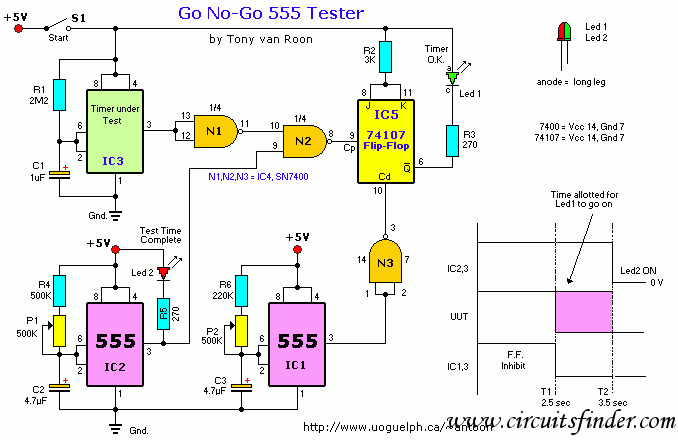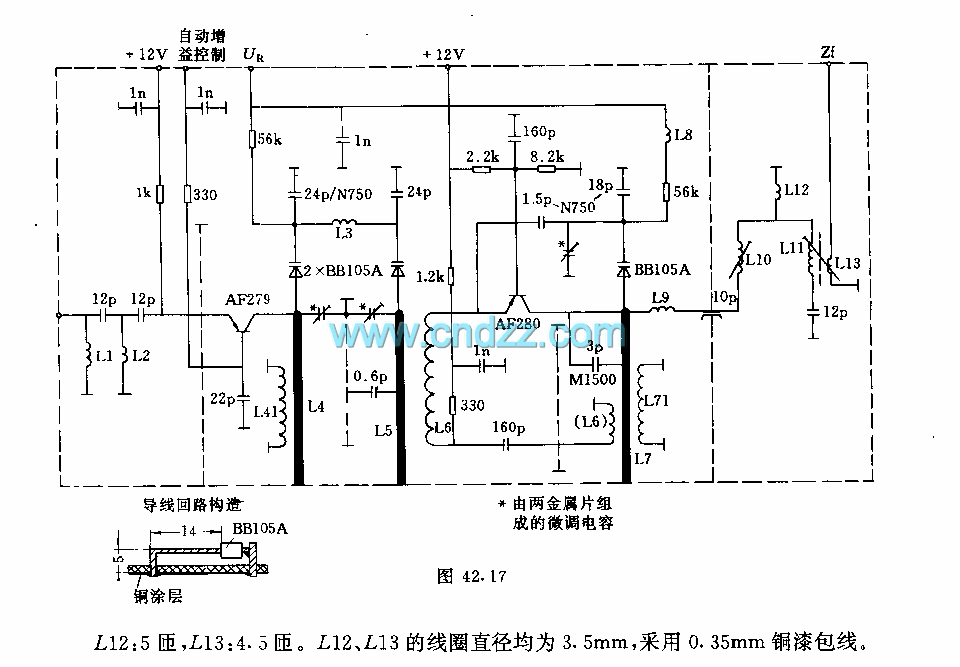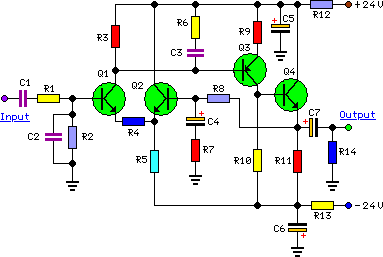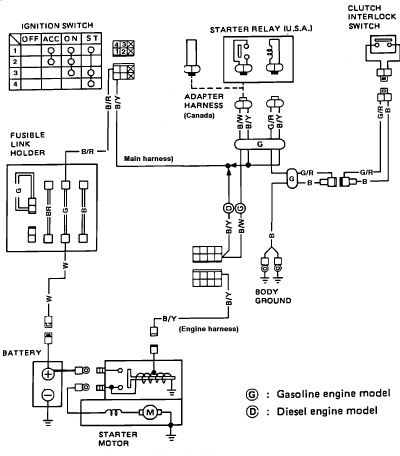
Go-No/Go Tester Circuit With 555 Timer IC

This circuit illustrates a Go-No/Go Tester Circuit utilizing a 555 Timer IC. Features include a more advanced unit with a precise timed testing procedure.
The Go-No/Go Tester Circuit is designed to evaluate components or assemblies by providing a simple pass/fail indication. The core of the circuit is the 555 Timer IC, which is configured in a monostable mode. In this configuration, the circuit generates a single output pulse of a specified duration when triggered.
The circuit typically includes an input section where the device under test (DUT) is connected. This input section may include a switch to initiate the testing process. When the switch is closed, the 555 Timer is triggered, causing it to output a high signal for a predetermined time, which can be adjusted by changing the resistor and capacitor values connected to the timer.
The output from the 555 Timer can be connected to an LED or a buzzer, providing visual or auditory feedback to indicate whether the DUT passed or failed the test. A green LED may signify a "Go" condition, while a red LED indicates a "No-Go" condition.
To enhance the functionality of the circuit, additional components can be integrated. For instance, a potentiometer can be included to allow for fine-tuning of the timing interval, accommodating various testing requirements. Furthermore, the circuit can be powered by a standard battery or DC power supply, ensuring portability and ease of use.
Overall, the Go-No/Go Tester Circuit with a 555 Timer IC represents an efficient solution for testing electronic components, providing clear and immediate feedback on their operational status.This circuit shows about Go-No/Go Tester Circuit With 555 Timer IC. Features: more advanced unit with a precise timed testing procedure. .. 🔗 External reference
The Go-No/Go Tester Circuit is designed to evaluate components or assemblies by providing a simple pass/fail indication. The core of the circuit is the 555 Timer IC, which is configured in a monostable mode. In this configuration, the circuit generates a single output pulse of a specified duration when triggered.
The circuit typically includes an input section where the device under test (DUT) is connected. This input section may include a switch to initiate the testing process. When the switch is closed, the 555 Timer is triggered, causing it to output a high signal for a predetermined time, which can be adjusted by changing the resistor and capacitor values connected to the timer.
The output from the 555 Timer can be connected to an LED or a buzzer, providing visual or auditory feedback to indicate whether the DUT passed or failed the test. A green LED may signify a "Go" condition, while a red LED indicates a "No-Go" condition.
To enhance the functionality of the circuit, additional components can be integrated. For instance, a potentiometer can be included to allow for fine-tuning of the timing interval, accommodating various testing requirements. Furthermore, the circuit can be powered by a standard battery or DC power supply, ensuring portability and ease of use.
Overall, the Go-No/Go Tester Circuit with a 555 Timer IC represents an efficient solution for testing electronic components, providing clear and immediate feedback on their operational status.This circuit shows about Go-No/Go Tester Circuit With 555 Timer IC. Features: more advanced unit with a precise timed testing procedure. .. 🔗 External reference





